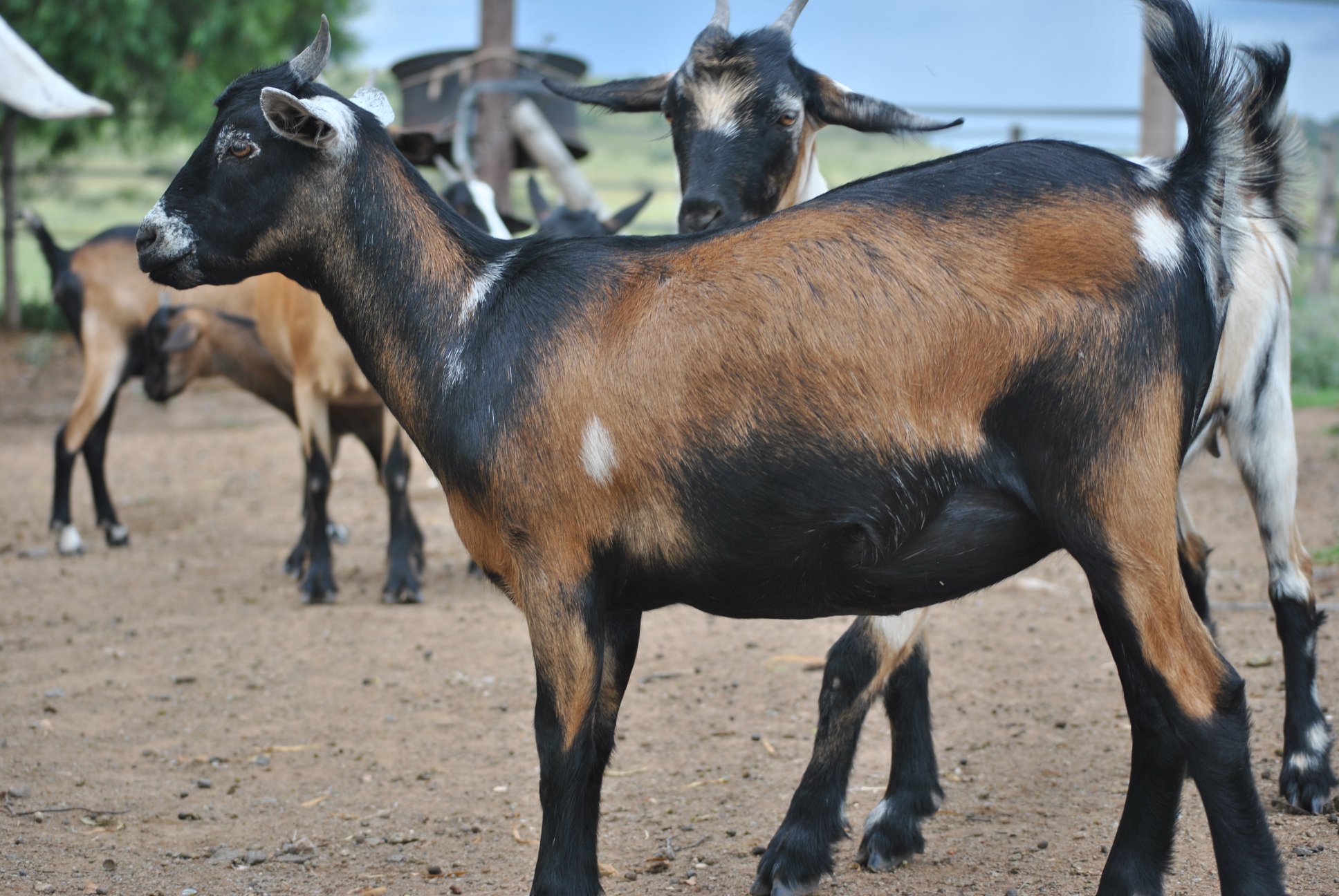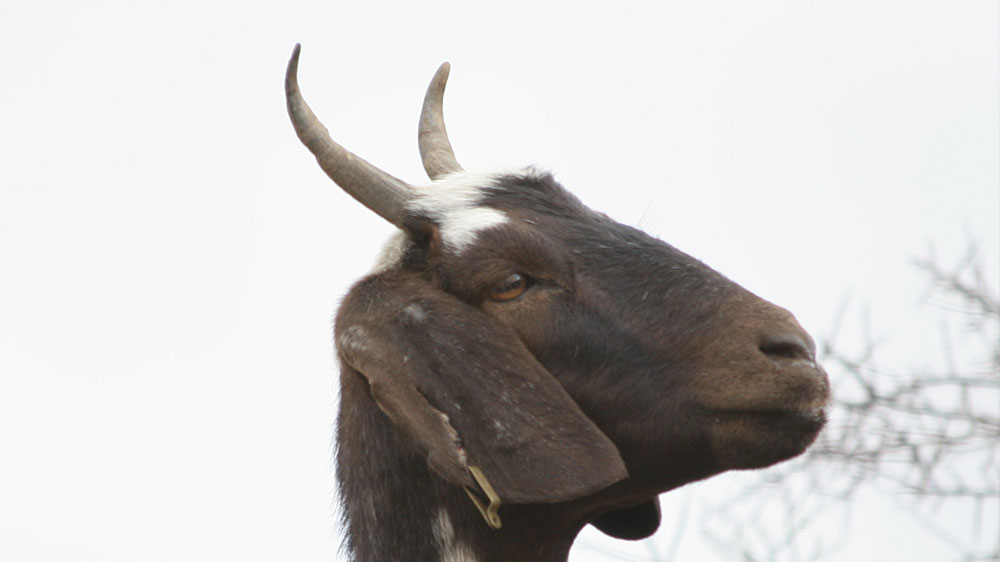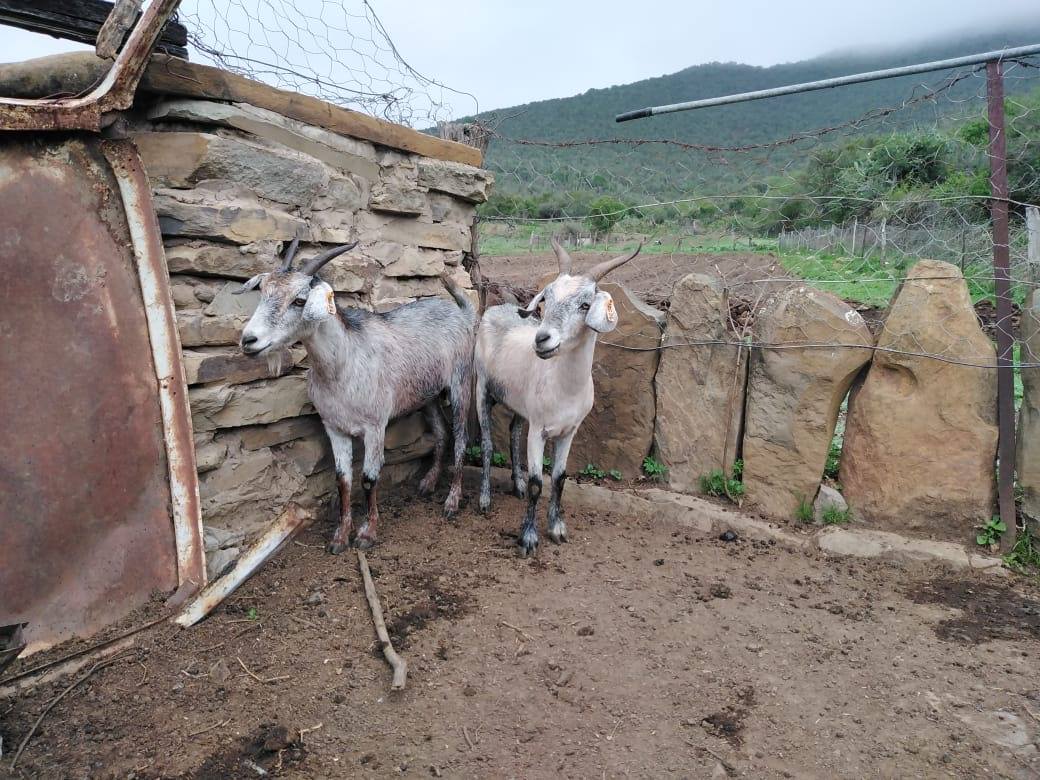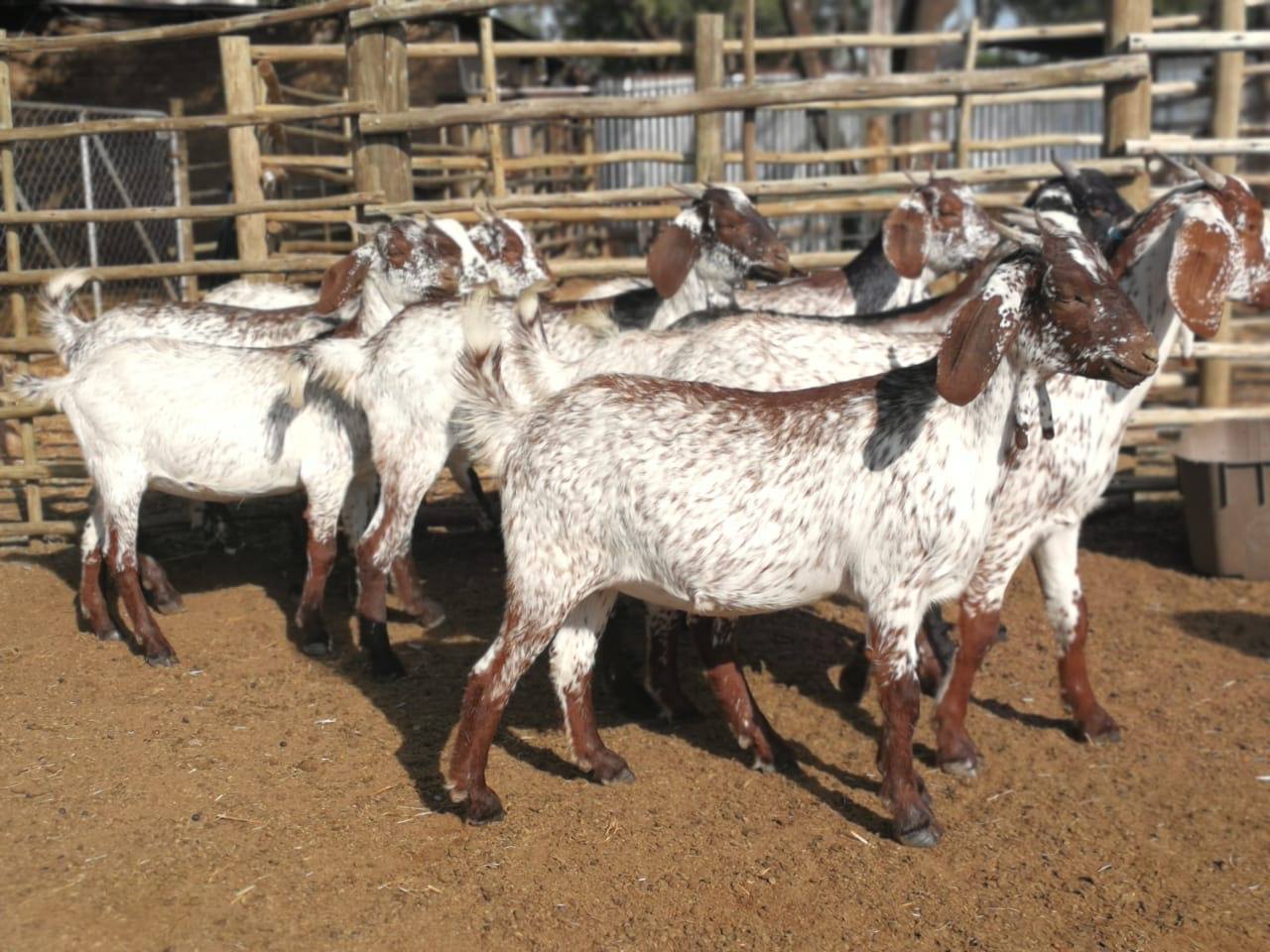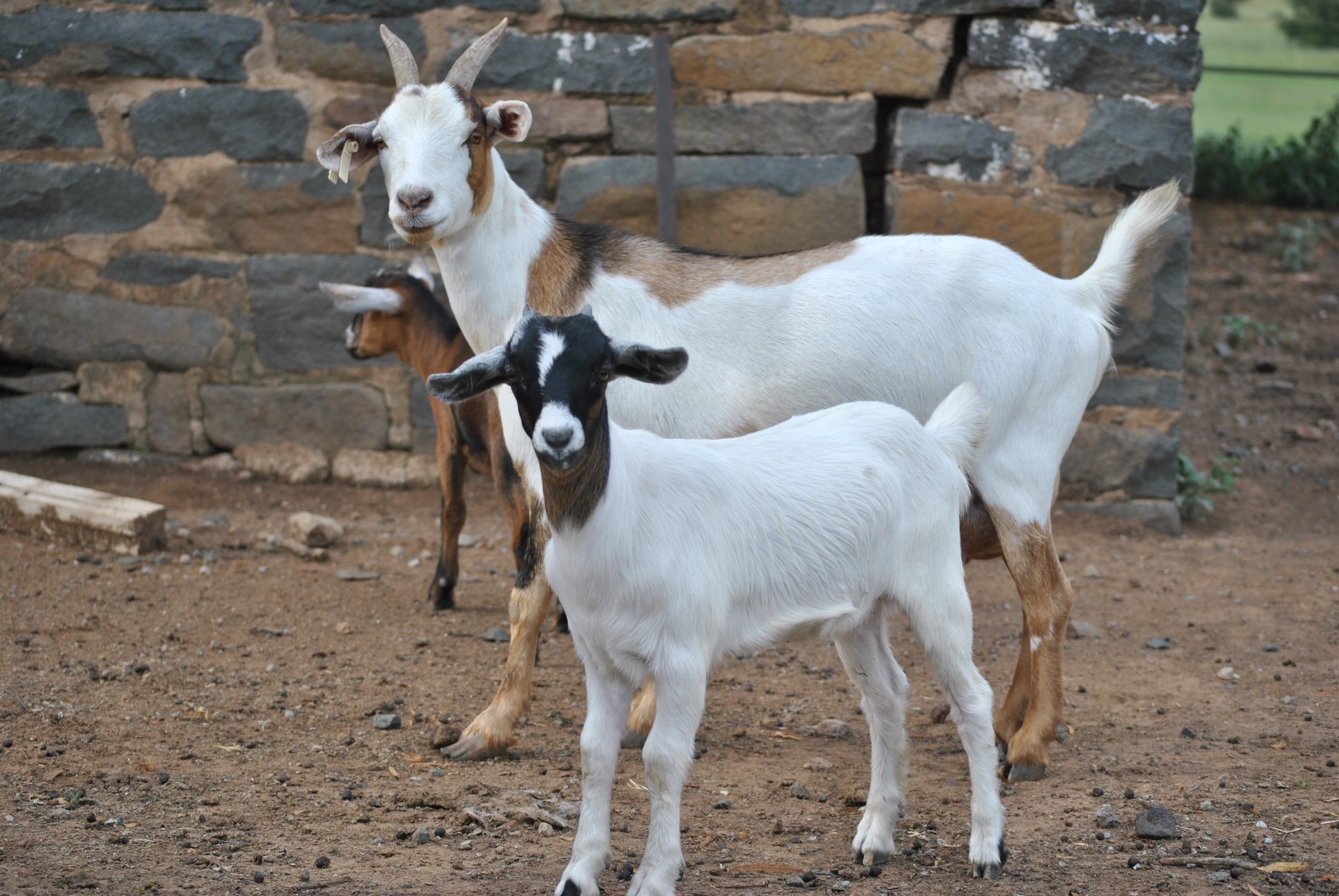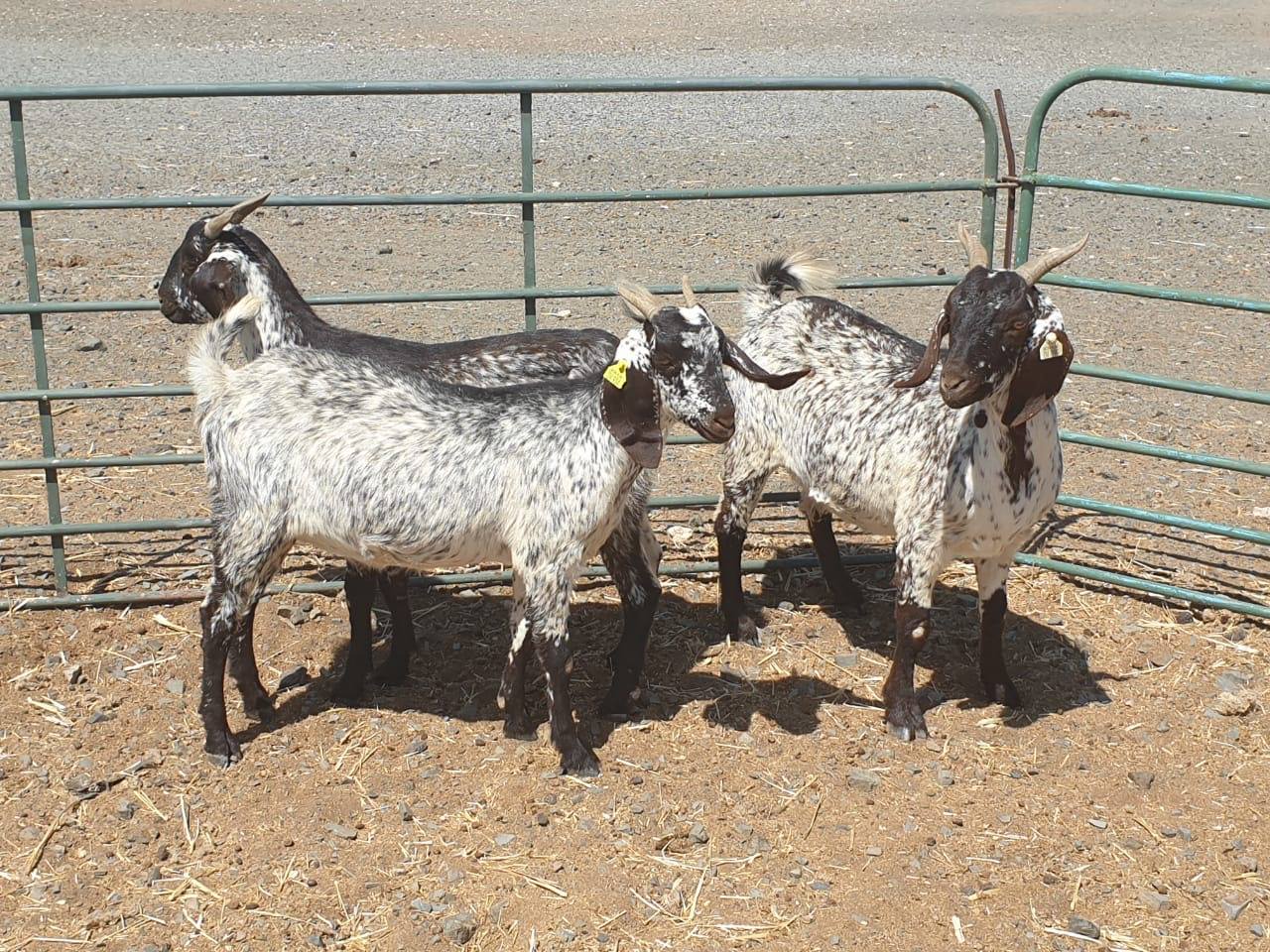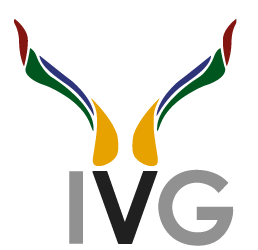
About
These divergent opinions also apply to the rest of Southern Africa with its widely divergent climatic conditions and ecosystems. Although extremely beautiful, the natural environment of South Africa is also a cauldron containing a witch’s brew that tests all living organisms to the utmost. These variable but exacting conditions, however, also created the greatest and most beautiful collection of game animals and indigenous farm animals in the world.
Attributes
Indigenous Veld Goats:
They are exceptionally fertile, even from a young age, Indigenous Veld Goat ewes are known for their extraordinary mothering abilities and will fiercely protect their offspring and themselves with their sharp efficient horns.
They have non-seasonal breeding patterns; and have a long productive lifespan.
Ewes have good milk production, and can easily feed twins or even triplets.
Indigenous Veld Goats have a very strong herding instinct, this help to protect them from predators, they will even fight them off with their sharp and efficient horns (horns also aids them in getting access to food, and to scratch at external parasites like ticks – naturally polled goats do occur, but very rarely).
They are antelope like with a lively posture and are alert.
They are mobile and light-footed, with lean, long shapely legs to move with ease and to walk long distances.
Indigenous Veld Goats are adaptable and less susceptible to tick borne diseases (like heartwater), more parasite tolerant, and are generally more drought and disease resistant – lower maintenance costs.
They can either browse (±60%) or graze (±40%) on a wide variety of plants, shrubs and grasses, and have the potential to select for a higher quality diet over a short time, and can obtain nourishment from average forage quality.
A slightly sloping rump and very slight cow- or sickle hocks, (usually more in ewes) is characteristic of Indigenous Veld Goats (aids towards giving birth).
They have a relatively thick and generally good pigmented skin, with good pigment on the vulnerable parts (head, ears, muzzle, chest, back and lower legs), to protect them from the sun.
They have a wide variety of colours and colour patterns which helps towards camouflaging and make them difficult to be spotted by predators.
Most indigenous goats grow cashmere between their hair in the cold winter season to protect them, in summer they shed this woolly cashmere.
Due to their hard, good pigmented hooves, there is almost no sign of growing claws (except maybe in very sandy areas) [growing claws influence the pastern joints – strong pastern joints aid in mobility].
Their meat is succulent with good flavour and is very low in cholesterol.
Development
Especially in the thorn-bush country of the Eastern Cape goat farming flourished in the nineteenth century. In the Border areas of the Eastern Cape the black and white farmers met and here white farmers acquired shorthaired lob-eared goats. These goats were used to open thorn-bush country for Angora goats, woolled sheep and mutton sheep such as the Dorper and even for cattle farming.
Here farmers started improving their indigenous goats during the twentieth century. This improvement was further helped on by a specific big robust dapple-coloured male goat. From these goats the well-known “Buffelsfontein Boer Goat stud”, was developed, which influenced the development of the Boer Goat not only in the Eastern Cape, but throughout Southern Africa.
By laying down breed standards, red-headed Boer Goat breeders have entrenched their position. The red-headed Boer Goat have replaced and swallowed up, the indigenous unimproved goats of various colours. Some eco-types of these natural indigenous goats almost disappeared with the purifying of the Boer Goat, as large quantities of indigenous goats were used in the upgrading process and werelater culled after the heavier muscled red heads were selected. Valuable and irreplaceable genetic material was lost because of this process.
It is a point of a heated debate among goat breeders of different breeds. Some breeders prefer the long-legged straight nosed unimproved conformation of indigenous goats. Other breeders prefer the roman nosed compact, well-muscled, short-legged conformation of the improved Boer Goat.
However, the unimproved indigenous goats appear to be less susceptible to tick borne diseases such as heartwater, and they appear to be more drought and disease resistant than Boer Goats. Ramsay, Smit & Casey (1987) reviewed the potential of the unimproved goat as an alternative to the improved Boer goat in environments where problems such as protozoal diseases, conditions such as foot rot and parasites and toxic plants were limiting factors. The goats in this trial were all recorded and evaluated on the National Scheme and the data were used to show that the unimproved goat produced more meat per unit area than Boer goats.
Commercialization of goat meat production, by increasing the percentage slaughtered in the formal sector, has the potential to increase income generated from goats. To achieve this, more attention must be given to the promotion of goat meat, and market development to increase consumer demand, and to encourage stockowners to farm with goats, rather than to just keep them.
Goats currently offer the biggest scope for improvement and development in the animal agriculture industry. This includes the commercialization of the unimproved indigenous goat resources as well as the development of value-added traits and products.
Environment
According to Dr Quentin Cambell, the tip of South Africa was known to seafarers as the fairest Cape, but also as the Cape of Storms. These divergent opinions also apply to the rest of Southern Africa with its widely divergent climatic conditions and ecosystems. Although extremely beautiful, the natural environment of South Africa is also a cauldron containing a witch’s brew that tests all living organisms to the utmost. These variable but exacting conditions, however, also created the greatest and most beautiful collection of game animals and indigenous farm animals in the world.
Opperman (1952) described the interaction between animals and plants and the environment as follows: These limiting factors make definite and inexorable demands which in South Africa, with its relatively changeable difficult and exacting conditions such as irregular and mostly low rainfall, create a definite pattern or fundamental standard. An organism that adapts itself to this pattern with difficulty or weakly, will suffer distress. In proportion to the degree, the vegetation and animal life deviates from the requisite pattern they will endure discomfort and degenerate and in the long run become extinct.
Three factors – temperature, humidity and light rule supreme and in South Africa they are stern masters who are apt to go to extremes and cause shocks to vegetation and animal life. Sometimes these shocks are difficult to endure and therefore indigenous animals are of a definite and distinctive pattern.
Opperman (op.cit.) continued: The Springbok, the recognized emblem of South Africa, has a definite form or pattern. This applies to other indigenous game animals such as the kudu, impala, blue wildebeest and others. Characteristics and qualities such as light-footedness; mobility; lively posture; a short, smooth, glossy covering of hair varying from dun-colour to reddish-brown; a roomy, loose, relatively thick skin and dark pigmentation; lean long shapely flat legs; a lean skull; strong, large and well-developed back, loins and buttock muscles; a slightly hanging rump; all these are very definitely apparent.
Indigenous Goats Origin:
According to Epstein (1937) many nomadic black and coloured nations inhabited North Africa hundreds of years ago. These nations could not readily migrate southwards due to a tsetse fly (Glossina morsitans) belt stretching along the equator across the whole of Africa. Epstein (1971) showed by means of a schematic map of tsetse fly distribution in Africa that there is a narrow tsetse-free corridor in the region of the lake district near Lake Victoria and the Ruwenzori mountains.
Epstein (1971) continued to explain that the Black Nations along the equator possessed cattle, some of these breeds were Nagana (sleeping sickness carried by the tsetse fly) tolerant. They also possessed goats, a few hairy sheep and dogs. Epstein (1971) said the coloured nations or Khoikhoin possessed domestic animals such as Zebu type cattle, such as the Boran, fat-tailed sheep and dogs. This coloured nation was driven southward by stronger nations armed with bows and arrows and battle axes.
This migration started during the fifth century AD in the region of the lake districts. They proceeded through the narrow tsetse-free corridor and then they proceeded along the drier West Coast. They later inhabited dry areas such as Angola, Namibia and Namaqualand.
Bachman (1983) confirmed Epstein’s (1971) theory about migration. The Black Nations moved down the hot sweltering East Coast where tick borne diseases are numerous. According to Bachman (1983) the Black Nations possessed a variation of Zebu type cattle breed fairly well adapted to tropical conditions, small hairy thin tailed sheep and small tough hairy dogs.
Both these nations, however, brought with them animals which eventually influenced animal breeding in Africa and around the world. They brought with them a mixture of long-haired and short-haired goats. Those goats consisted of a mixture of short and long-eared or lob-eared goats.
Subsequently, by means of barter or raiding, the Khoikhoin also acquired goats and the Black people acquired fat-tailed sheep. In fact, Barrow (1801) wrote that near the Hartbees river in the Northern Cape, he encountered some Namaqua Hottentots who possessed a herd of small handsome goats that were speckled like the leopard. The South African farmers called these goats “skilderbokke” or speckled goats.
Black farmers, coloured farmers and white farmers soon recognised the fact that these indigenous goats could live on almost every sort of plant material on a farm and could survive and reproduce under extremely unfavourable conditions. Indigenous goats spread rapidly over southern Africa and were used to produce milk, meat and skins. Indigenous goats were also used in numerous trading deals with travelling traders by all farmers.
The Dangers
Opperman (1952) described the interaction between animals, plants and the environment as follows:
These limiting factors (temperature, humidity & light) make definite and inexorable demands which in South Africa, with its relatively changeable, difficult, and exacting conditions such as irregular and mostly low rainfall, create a definite pattern or fundamental standard. An organism that adapts itself to this pattern with difficulty or weakly will suffer distress. In proportion to the degree, the vegetation and animal life deviates from the requisite pattern they will endure discomfort and degenerate and in the long run become extinct.
It is quite clear why there are such divergent and unique well-adapted game animals as well as indigenous sheep, cattle and goat breeds to be found in Southern Africa. Without these hardy indigenous breeds farming in South Africa by black as well as white farmers will be virtually impossible.
Dr Laurie Hammond (1985) director of the U.N. Food and Agricultural Organization, stated that 40% of the world’s 4000 domestic livestock breeds are in danger of becoming extinct. The worldwide trend for super breeds could be wiping out thousands of indigenous breeds with their unique abilities to perform in harsh environments. Hammond (op.cit.) continued: Breeds of cattle, pigs, and poultry, once the backbone of farming economics in many countries, was replaced by a few super breeds which only performed in ideal conditions. Irreplaceable genetic resources are being lost. Many of these native breeds have maintained humans for more than 10 000 years.
“Their loss is not just a matter of heritage. It’s very much about our future.”
Over centuries the Veld Goat survived a long and dangerous migration journey through Africa, and its genes have developed naturally towards functional efficiency.
Some of these natural indigenous eco-types almost disappeared with the purifying of the Boer Goat.
The basis for every breeder’s selection should be for natural, functional efficient animals, with an emphasis on fertility.
Breed Improvement
The tragedy of breed improvement, (Almero de Lange,1991), the adverse effects of well-intentioned but ill-advised breed improvement programmes have been with us for a long time. Crossbreeding programmes may become so widespread that the existence of valuable genetic diversity in the indigenous and adapted breeds may be threatened and will merely reduce the hardiness of local adapted animals.
Dr Laurie Hammond (1995) director of the U.N. Food and Agricultural Organization, stated that 40% of the world’s 4000 domestic livestock breeds are in danger of becoming extinct. The worldwide trend for super breeds could be wiping out thousands of indigenous breeds with their unique abilities to perform in harsh environments. Hammond (op.cit.) continued: “Breeds of cattle, pigs, poultry, sheep and goats, once the backbone of farming economics in many countries, were being replaced by a few super breeds which only performed in ideal conditions. Irreplaceable genetic resources are being lost. Many of these native breeds have maintained humans for more than 10 000 years.”
Dr Herbert Atkinson said in the 18th century about man always wanting to “develop” the animals around him:
”Their loss is not just a matter of heritage. It’s very much about our future.”


